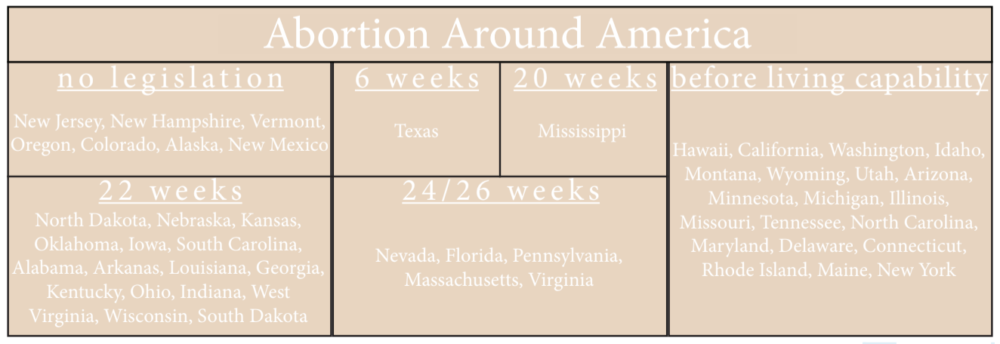
design: Lily Clark
permission to print photos: Emma Clute
While we are all unique and fundamentally different from each other, there is one thing that connects us all: language. Despite our differences, every human has a language they use to communicate complex ideas with those around them, and this is something that makes us unique from the rest of the animal kingdom.
The first aspect of human languages that is unique is duality of patterning. This phenomenon describes the breakdown between the two main parts of language: the form and the combination of forms, according to the National Institute of Health. The form is the most basic part of a language and refers to the sounds that don’t have meaning by themselves. For most languages, this is the alphabet. Then, there is the combination of forms which refers to the synthesis of sounds to create meaning, or words.
Another key tenet of languages is the arbitrariness of the sign. This is the idea that there is no intrinsic connection between the words we use and the things they refer to, according to the NIH. For example, there is no inherent correlation between rain and the water falling from the sky. “Rain” is just what we call it.
Displacement is another key part of languages and refers to the idea that we are able to talk about things beyond what is happening right here and right now. With language, we can talk about what has happened in the past, what will happen in the future and what could happen at some point in time.
Similarly, humans use reflexivity to talk about the languages themselves, according to linguist John A. Lucy. Discussing verb tenses, adjectives and even writing this column are only possible because we have the vocabulary and grammar to discuss the different aspects of our communication system.
While animal forms of communication can have some of the characteristics of human languages, none of them utilize them all. For example, parrots can talk like a human would but, unlike us, they do not understand the definitions of those words and can’t use the basic forms to create a meaningful combination of forms.
Another example is that no other species uses displacement the way we do. While many can communicate about food or predators, most don’t stop to discuss the food they ate last week or how they’re planning to spend the afternoon.
Unlike animals, we use language to talk about anything we can imagine, not just what’s necessary for survival. And even though human communication can take very different forms, given the roughly 6,500 languages on Earth, all languages share these core tenets, according to the Linguistic Society of America. However, because each language uses them differently, things can get a little confusing. This was what philosopher Willard Van Orman Quine sought to illustrate through his thought experiment about the arbitrariness of the sign.
He theorized that a native speaker of an unknown language would utter the word “gavagai” while pointing at a rabbit next to a linguist. Initially, the linguist would think the word must mean rabbit, but then he would realize that that could be completely wrong. Perhaps the speaker said something like “dinner” or “let’s hunt” or even “undetached rabbit-parts”, according to Quine. In this theory of the indeterminacy of translation, Quine explains that when translating a language, there will always be several alternative translations and several correct answers.
This means that while all human languages have fundamental aspects of them in common, each language also has its own distinct way of expressing ideas. Additionally, these ideas will never translate perfectly into another language. In this way, to go about learning and embracing a new language, we must appreciate the language in its own right and separate it from our own completely.


